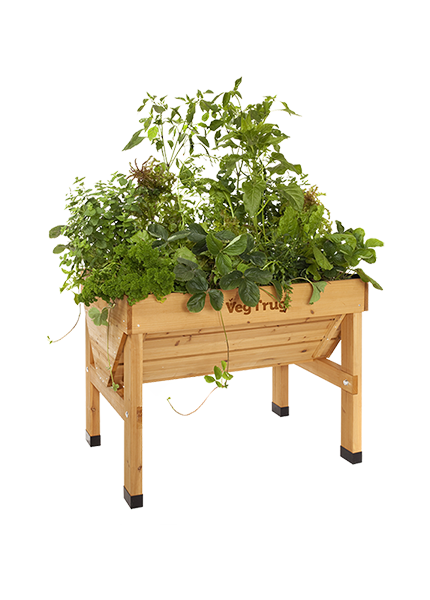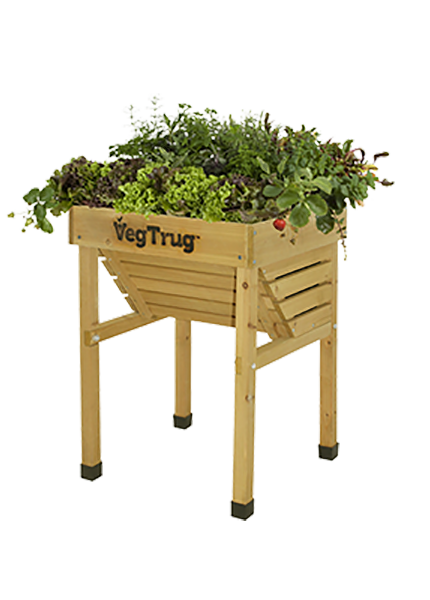Nasturtium comes in a range of varieties. There are those with bushy leaves for borders, or trailing varieties that are perfect for containers and climbing. There’s a nasturtium for every garden.
They grow fast and are enjoyed for the array of colourful and pretty flowers these easy to care for plants produce. What’s more the plant and flowers are edible, adding peppery tones to salads and soups.
Read more below on how to grow nasturtium easily.
Nasturtium needs warm soil, full sun and you can plant nasturtium outside after the first frosts have gone or plant earlier using a VegTrug greenhouse cover. Well drained soil is essential but unlike many other plants and herbs nasturtium thrives in poor quality soil.
Sow them as seeds directly into 1.5cm deep holes, and about 12cm apart. When the first shoots appear, separate them to about 30cms apart. If you want to start them indoors in pots place one seed in a 9cm pot then plant outside towards the end of spring.
Once you learn how to grow nasturtium, it requires very little care. You can leave them alone and they’ll actually do brilliantly. Too much care, in the form of fertilizers and overwatering means you’ll likely get too much green and not the stunning array of flowers that come with this plant.
Remove dead heads for a longer season of those beautiful, bright flowers and if they’re in pots or containers keep them watered and the soil moist, but well drained. Outside they probably won’t need watering at all, or rarely. Nor can they handle too much humidity or overly dry climates. Nasturtium prefers daytime temperatures around 20-30°C.
If you’ve chosen a climbing variety you can train them to climb garden features. The bushy varieties are great in borders. Choose a trailing variety for your VegTrug and prune, probably, twice throughout the season. Cut between 15 and 30cm off long stems and remove dead flowers.
As with any plant you’ll possibly have to deal with a host of bugs and pests. If you’re looking at how to grow nasturtium, it’s worth looking at a few of the main culprits, like these below.
Nasturtium actually attracts bugs and pests so you can use it to lure them away from your other plants, although it will be at the expense of your lovely nasturtium. Often cabbage white butterflies lay their eggs on the nasturtium leaves and the hatching young then eat the leaves.
Aphids are also a particular problem for nasturtium and they can also suffer bacterial leaf spot, which shows as small brown or black spots. Allowing for ample airflow and watering using a drip method can reduce the chance of this happening. Waterlogged nasturtium can suffer root rot, so make sure there’s good drainage.
Similar to watercress, nasturtium gives salads a slightly hot, peppery flavour and the leaves, seeds and flowers are all edible. The seed pods are pickled and used in place of capers and you can collect the ripe seeds, dry them out and sow them again the following year.
How to grow nasturtium is part of the VegTrug Grower’s Guide.

